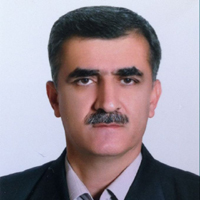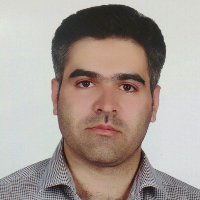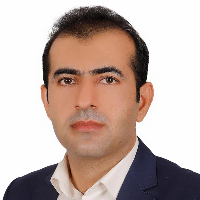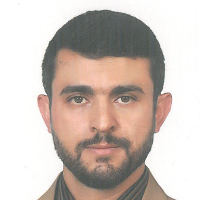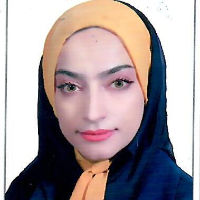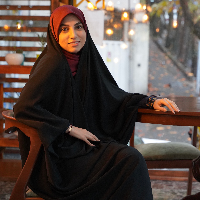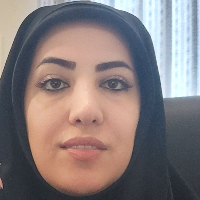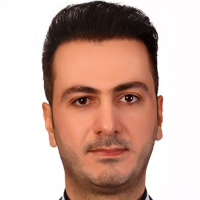فهرست مطالب m. rezaei
-
در آینده خطر فرونشست زمین به دلیل بحران کمبود منابع آبی و مدیریت نامناسب منابع آبی تشدید می شود. برای کاهش خطرات مرتبط با فرونشست زمین، لازم است مناطق مستعد خطر فرونشست شناسایی و ارزیابی شوند و اقدامات لازم انجام شود. در این مطالعه، ابتدا با استفاده از روش تداخل سنجی راداری به نام LiCSBAS، خطر فرونشست زمین شناسایی و ارزیابی شد. سپس با استفاده از مدل جنگل تصادفی RF، رابطه مکانی بین رخداد خطر فرونشست زمین و عوامل موثر مانند ارتفاع سطح زمین، شیب، جهت شیب، لیتولوژی، کاربری اراضی، افت آب زیرزمینی، فاصله از رودخانه، فاصله از گسل، شاخص رطوبت توپوگرافی و انحنای قوس مورد بررسی قرار گرفت. در انتها، بعد از کالیبراسیون الگوریتم جنگل تصادفی، نقشه حساسیت خطر فرونشست زمین تهیه شد. نتایج تحلیل سری زمانی تداخل سنجی LiCSBAS در بازه زمانی 2015 تا 2022 نشان داد که مرکز دشت مرودشت - خرامه و نواحی کشاورزی مجاور به طور مداوم در حال فرونشینی هستند و پهنه بندی نقشه سرعت میانگین تغییر شکل نشان دهنده نرخ فرونشست 11/6 سانتی متر در سال است. نتایج تعیین ارتباط مکانی بین رخداد فرونشست و عوامل موثر، تاییدکننده تاثیر مثبت فاصله از رودخانه، کاربری اراضی شهری و کشاورزی، عمق سنگ کف بستر (ضخامت آبخوان)، افت آب زیرزمینی و سازندهای آبرفتی و ریزدانه روی رخداد این پدیده است. همچنین نتایج مدل سازی فرونشست با استفاده از الگوریتم جنگل تصادفی نشان داد که عوامل عمق سنگ کف، افت آب زیرزمینی، کاربری اراضی و زمین شناسی بیشترین تاثیر اهمیت را در پتانسیل رخداد فرونشست در منطقه موردمطالعه دارند. همچنین بر اساس نتایج، حدود سه تا چهار درصد از مناطق در کلاس شدید و بسیار شدید خطر فرونشست زمین به ویژه در مرکز و حومه شهر مرودشت قرار دارند؛ بنابراین مدیریت و کنترل منابع آب و ایجاد برنامه مدون برای کاهش خطر فرونشست و همچنین حفظ تغذیه آبخوان در دشت مرودشت - خرامه امری ضروری است.
کلید واژگان: ارزیابی خطر, فرونشست, تکنیک Licsbas, دشت مرودشت - خرامه, مدل جنگل تصادفی}In the future, the risk of land subsidence due to water resources shortage crisis and improper water resources management will become more and more dangerous. It is necessary to assess and identify areas susceptible to subsidence risk and take necessary actions to reduce risks related to land subsidence. In this study, first, the risk of land subsidence was identified and evaluated using a radar interferometry method called LiCSBAS. Then, the spatial relationship between the occurrence of land subsidence hazard and effective factors such as ground elevation, slope, slope aspect, lithology, land use, groundwater decline, distance from rivers, distance from faults, topographic moisture index, and arc curvature was investigated using the random forest (RF) model. In the end, the land subsidence hazard sensitivity map was prepared after calibrating the random forest algorithm. The analysis of LiCSBAS interferometric time series data from 2015 to 2022 showed that the center of the Marvdasht-Kharameh plain and adjacent agricultural areas are continuously subsiding and the mean deformation rate map showed a subsidence rate of 11.6 centimeters per year. The results of determining the spatial relationship between subsidence occurrence and effective factors confirmed the positive impact of distance from rivers, urban and agricultural land uses, depth of bedrock (aquifer thickness), groundwater decline, and alluvial and fine-grained formations on this phenomenon. Also, the results of subsidence modeling using the random forest algorithm showed that factors such as bedrock depth, groundwater decline, land use, and geology have the greatest impact on the potential for subsidence occurrence in the study area. Also, based on the results, about 3 to 4 percent of the areas are in the very high and extremely high-risk classes of land subsidence, especially in the center and suburbs of Mervdasht. Therefore, water resources management and control and developing a systematic program to reduce subsidence risk and aquifer recharge conservation in Merudasht-Kharameh Plain is essential.
Keywords: Risk Assessment, Subsidence, Licsbas Technique, Marvdasht-Kharameh Plain, Random Forest Model} -
نشریه یافته های تحقیقاتی در گیاهان زراعی و باغی، سال دوازدهم شماره 2 (پاییز و زمستان 1402)، صص 237 -253
با توجه به محدودیت منابع آب در کشور، ارقام گندم آبی در مناطق سرد و معتدل سرد با کم آبیاری و یا آبیاری محدود آخر فصل مواجه می شوند. در این مناطق اغلب کشاورزانی که گندم آبی کشت می کنند بدلیل نداشتن آب کافی در بهار نمی توانند بدفعات کافی آبیاری را اجرا کنند و لذا نتیجه مطلوب از کشت ارقام پر توقع به آبیاری بدست نمی آورند. رقم جدیدگندم حیران با شجرهLufer-1/Kinaci97 باکد (CD-92-6) در قالب خزانه بین اللملی از مرکز بین المللی تحقیقات ذرت وگندم (CIMMYT) در سال 1389 دریافت و در چهار ایستگاه تحقیقاتی سرد کشور (کرج، جلگه رخ، اردبیل و مشهد) مورد ارزیابی اولیه قرارگرفت و به دلیل مناسب بودن، انتخاب و در سال زراعی 91-1390 در آزمایش مقایسه عملکرد مقدماتی اقلیم سرد تحت شرایط آبیاری بهینه با میانگین عملکرد دانه 8417 کیلوگرم در هکتار در مقابل شاهدهای اروم، زارع و میهن (به ترتیب با میانگین عملکرد 7679، 6828 و 7772 کیلوگرم در هکتار) و تحت تنش خشکی آخر فصل با میانگین عملکرد دانه 4653 کیلوگرم در هکتار در مقابل میانگین عملکرد ارقام شاهد اروم، زارع و میهن (به ترتیب با میانگین عملکرد 4375، 3544 و4358 کیلوگرم در هکتار) در هر دو شرایط انتخاب شد. لاین مذکور در سال زراعی 92-1391 در آزمایش مقایسه عملکرد پیشرفته مناطق سرد کشور تحت شرایط آبیاری بهینه در پنج منطقه با میانگین عملکرد دانه 8340 در مقابل ارقام شاهد اروم، زارع و میهن (به ترتیب با میانگین عملکرد 7518، 7613 و 8205 کیلوگرم در هکتار) برای بررسی سازگاری انتخاب شد. در آزمایش سازگاری اقلیم سرد در چهار منطقه طی سال های 94-1392 تحت شرایط تنش خشکی انتهای فصل، لاین CD-92-6 با میانگین عملکرد 4470 کیلوگرم در هکتار و با اثر همزمان عملکرد و پایداری (14=YS) برتر از ارقام شاهد زارع و میهن (به ترتیب با میانگین عملکرد 3711 و 3743 کیلوگرم در هکتار و با YSهای به ترتیب 3 و3 -) ظاهر و به عنوان لاین گندم کاندیدای معرفی انتخاب گردید. در آزمایش های ترویجی در شرایط تنش خشکی انتهای فصل، لاین CD-92-6 دارای میانگین عملکرد دانه 5143 کیلوگرم در هکتار در مقایسه با ارقام حیدری و میهن به ترتیب با میانگین عملکرد 4808 و 4758 کیلوگرم در هکتار در شرایط یاد شده بود. پتانسیل عملکرد رقم حیران در شرایط تنش خشکی آخر فصل، در مزارع کشاورزان در استان خراسان رضوی شهرستان چناران با میانگین عملکرد 6320 کیلوگرم در هکتار بود. واکنش این رقم نسبت به بیماری زنگ زرد تحت آلودگی مصنوعی واکنش مقاوم تا نیمه حساس بود. رقم حیران از تحمل به سرمای قابل قبول برخوردار و کیفیت نانوایی خوبی دارد. این رقم در سال 1398 برای کشت در شرایط تنش خشکی آخر فصل در مناطق سرد کشور معرفی شد.
کلید واژگان: گندم آبی, پایداری عملکرد, تحمل به خشکی, حیران}Due to limited water resources in the country, irrigated wheat cultivars in cold and temperate cold regions are faced with lack of irrigation or limited irrigation at the end of the season. In these areas, most farmers who cultivate irrigated wheat due to lack of sufficient water in the spring cannot perform enough irrigation and therefore do not get the desired result from cultivating high-yielding cultivars. Development of new cultivars with high grain yield under terminal drought stress conditions is one of the major goals of wheat breeding program for cold regions of country. Heyran new bread wheat cultivar introduced from International Research Center for Maize and Wheat (CIMMYT) to Iran through an international nursery in 2010 and was evaluated in a primary trial in four research stations (Karaj, Jolge-Rokh, Ardabil and Mashhad), and due to its favorable characteristics was selected for further evaluation in preliminary yield trials in cold regions. This line showed grain yield of 8417 kgha-1 under normal irrigation compared to the check cultivars Orum, Zareh and Mihan (with average yields of 7679, 6828 and 7772 kgha-1, respectively), and under terminal drought conditions with an average seed yield of 4653 kgha-1, compared to the check cultivars Orum, Zareh and Mihan (with average yields of 4375, 3544 and 4358 kgha-1, respectively) and was selected in both conditions. Aforementioned line showed grain yield of 8340 kgha-1 in advanced yield trial of cold regions breeding program under normal conditions compared to check cultivars Orum, Zareh and Mihan (with average yields of 7518, 7613 and 8205 kgha-1, respectively) in five locations, selected for final evaluation in adaptability test. Grain yield of this line which was presented as CD-92-6 at the adaptability test was 4470 kgha-1 against 3711 and 3743 kgha-1 of Zareh and Mihan checks cultivars under water stress conditions, respectively, during two cropping seasons 2013-14 and 2014-15. This line showed overall mean grain yield, of 5143 kgha-1 under terminal drought stress conditions in extensional farmer’s fields. For these conditions checks cultivars Hydari and Mihan showed grain yields of 4808 and 4758 kgha-1, respectively. Grain yield potential of this line was recorded as 6323 kgha-1 in Khorasan Razavi farmers' field. According to the latest evaluations the response of this line to yellow rusts was resistant to semi sensitive under severe artificial infection. Wheat line CD-92-6 has considerable cold tolerance and good bread making quality and based on its good agronomic characteristics in 2019 this line was released as Heyran, for cultivation under terminal drought stress conditions in the cold agro-climatic regions.
Keywords: Wheat, Yield Stability, Drought Tolerant, Heyran} -
افت زیاد مواد شیمیایی، بادبردگی و نشست خارج از هدف سم پاش های متداول در ایران، مطالعه روی سم پاش های باردارکننده سم را ضروری می سازد. به همین منظور یک کلاهک الکترودینامیکی طراحی و ساخته شد. در این تحقیق از روش سطح پاسخ برای بهینه سازی عملکرد کلاهک پاشش الکترودینامیکی در سم پاش پشتی موتوری ذره ای پاش استفاده شده است. پارامترهای فاصله افشانک تا هدف (شامل سه سطح 2، 4 و 6 متری)، زاویه قرارگیری هدف (شامل سه سطح صفر، 45 و 90 درجه) و سرعت باد (شامل سه سطح 2.5، 3 و 3.5 متر بر ثانیه) به عنوان پارامترهای مستقل و یکنواختی پاشش و درصد سطح پاشش به عنوان متغیرهای وابسته مورد ارزیابی قرار گرفتند. نتایج تجزیه واریانس نشان داد که مولفه های خطی زاویه پاشش و فاصله پاشش و هم چنین برهم کنش زاویه پاشش×فاصله پاشش و فاصله پاشش×سرعت باد، دارای تاثیر معنی داری بر تغییرات ضریب پاشش کل می باشند (p<0.05). بیش ترین ضریب یکنواختی پاشش کل برابر با 1.95 برای زاویه قرارگیری هدف صفر درجه، فاصله 6 متری و سرعت 3.5 متر بر ثانیه و کم ترین مقدار این ضریب برابر با 1.18 برای زاویه قرارگیری هدف 90 درجه، فاصله پاشش 2 متر و سرعت باد 2.5 متر برثانیه به دست آمده است. مدل ریاضی ارائه شده برای پیش بینی تغییرات ضریب یکنواختی پاشش و درصد سطح پاشش از دقت بسیار بالایی برخوردار می باشد. ضریب یکنواختی پاشش با افزایش سرعت باد و فاصله پاشش افزایش یافته است (p<0.01). در محدوده فاصله پاشش 2، 4 و 2 الی 4 متری، با افزایش زاویه پاشش مقدار سطح پاشش به طور معنی داری افزایش یافته است (p<0.05). شرایط بهینه برای عملکرد کلاهک الکترودینامیکی ساخته شده در سرعت هوای 3.5 متربرثانیه، فاصله پاشش 2.58 متر و زاویه پاشش 90 درجه با مطلوبیت 0.792 به دست آمد.
کلید واژگان: زاویه قرارگیری, سرعت باد, سطح پاسخ, سم پاش, ضریب یکنواختی, کلاهک الکترودینامیکی}IntroductionDue to the increasing need for agricultural products, protection of products against pathogens and preventing them from being wasted is important. Studies on droplet charging systems result in the reduction of chemical usage and an increase in the deposition of droplets on the target. Conventional sprayers used in Iran have numerous disadvantages such as drift, environmental pollution, lack of complete and homogeneous coverage of the spraying surface, phytotoxicity, and crop losses. Therefore, evaluation of new spraying methods and using a variety of electrical sprayers as alternatives to conventional spraying is essential. This study aims to design, construct, and optimize the performance of the electrodynamic head of an atomizer motorized knapsack sprayer, and study the effects of the angle of the target position, spraying distance, and wind speed on the performance of the electrodynamic sprayer.
Materials and MethodsExperiments were performed in an agricultural machinery workshop at The Department of Biosystems Engineering, the University of Kurdistan, Iran, with an atomizer motorized knapsack sprayer equipped with an electrodynamic head. The effect of some factors including wind speed, spraying angle, and spraying distance on deposition, coverage percentage, and uniformity of spraying were investigated. These effects were investigated to determine the uniformity coefficient of total spraying. Design Expert 8.0.6 Trial software was used to design the experiments based on central composite design and to analyze the data. The investigated factors and levels were: the distance of nozzles from the target (at three levels of 2, 4, and 6 m), the angle of the target position (at three levels of 0, 45, and 90 degrees), and wind speed (at three levels of 2.5, 3, and 3.5 m s-1). Water-sensitive paper cards were used to evaluate the quality of the spraying. The cards were scanned and magnified with an Olympus SZX12 Stereo Microscope equipped with an objective lens of X1 and a total magnification of 7X. The characteristics of droplet size were determined using Mountains Map Trial and Deposit Scan software.
Results and DiscussionThe maximum value of the total spraying uniformity coefficient was equal to 1.95 for the spraying angle of 0 degrees, the distance of 6 meters, and the speed of 3.5 meters per second. Meanwhile, the lowest value of the spray uniformity coefficient of 1.18 was obtained for the test conditions of 90 degrees, distance of 2 m, and speed of 2.5 m s-1, respectively. Based on analysis of variance for the two-factor interactions model (P-value less than 0.0001, explanation coefficient 0.9383, absolute explanation coefficient 0.910, standard deviation 0.0590, and coefficient of variation 3.790%). It can be stated that this model is highly accurate in predicting the uniformity of the total spraying, and the linear components of spraying angle and spraying distance, as well as the interaction of spraying angle × spraying distance and spraying distance × wind speed, significantly affect the uniformity of the total spraying (p<0.05). Nevertheless, the linear component of wind speed and the interaction between wind speed and spraying angle had no significant effect on the changes in the uniformity coefficient of the total spray. According to the variance analysis table (F-values), spraying distance has a far greater effect on the spraying uniformity coefficient than the spraying angle.It has been observed that the spraying uniformity coefficient will increase by increasing the spraying distance and decreasing the spraying angle. It can also be stated that the linear components of spraying angle and spraying distance, the interaction component of spraying angle × spraying distance, and the square power of the components of spraying distance and wind speed have a significant effect on surface coverage. The values of R2, Adj-R2, CV, and PRESS for the model adapted to the test data of leaf surface coverage percentage were obtained as 0.9929, 0.9865, 4.87%, and 188.61, respectively.Among the three input variables, the spraying distance has the greatest effect on the coverage of water-sensitive papers. At larger spraying angles, especially 90 degrees, the coverage decreased with the increasing distance. At spray angle of 90 degrees, by increasing the distance from 2 to 4 m, the spray uniformity coefficient increased from 1.18 at a wind speed of 2.5 m s-1 to 1.84 at a wind speed of 3.5 m s-1. However, at smaller spraying angles (for example zero-degree angle), at first, the spraying coverage increases with the increase of the spraying distance from 2 to 3 m and then sharply decreases afterward. According to the contours of spray coverage, in the spray distance range of 4 to 6 m and regardless of wind speed, the spray coverage does not vary with the increase of the spraying angle (p< 0.05). Meanwhile, in the spray distance range of 2 to 4 m, with the increase of the spraying angle, the spraying coverage increases significantly (p<0.05). Overall, increasing the distance between the sprayer and the target decreased the surface coverage on the target, and in electrodynamic spraying, the uniformity of particle deposition on the underside of the target was relatively the same as on the upper side.
ConclusionTo improve the performance of the atomizer motorized knapsack sprayer, an electrodynamic spraying head was designed and built, and its performance was optimized using the response surface method (RSM) with a central composite design. During the research process, the influence of the independent parameters such as the distance between the nozzle and the target, the angle of the target position, and the wind speed on the variables including spraying uniformity, the percentage of the spraying coverage, and the percentage of changes in the total spraying coefficient were discussed and investigated. The results of the research led to the determination of the 3.5 m s-1 wind speed, 2.5 m sprayer distance, and 90 degrees spraying angle with 0.792 desirability, which were considered as the optimal performance conditions of the electrodynamic spraying head. The results of laboratory validation for optimal conditions show that the uniformity of total spraying indicated by the total relative span factor (RSFT) and the percentage of spraying coverage (Cov) are equal to 1.65 and 28.27%, respectively.
Keywords: Electrodynamic Head, Response Surface Method, Spraying Angle, Sprayer, Uniformity Coefficient, Wind Speed} -
پیشینه و اهداف
در عصر حاضر، با توجه به گسترش روزافزون فناوری در سراسر جهان، سیستم های آموزش الکترونیکی به سرعت در حال گسترش هستند. با پیشرفت آموزش الکترونیکی حرکت از سمت آموزش سنتی (رویکرد ارائه یک آموزش برای همه) به سمت آموزش شخصی سازی شده آغاز شد. آموزش شخصی سازی شده یک رویکرد آموزشی است که هدف آن، سفارشی کردن یادگیری براساس نقاط قوت، مهارت ها، علایق و نیازهای یادگیرنده است. این روش از آموزش مانند هر شیوه نوین دیگری دارای نقاط ضعف و قوت است. در واقع، می توان افزایش انگیزه و کسب مهارت خودحمایتی را از مزایای مهم این نوع از آموزش دانست. در مقابل، به عنوان نقاط ضعف این روش می توان به زمان بر بودن آموزش، چالش در پیاده سازی و عدم وضوح در شیوه به کارگیری اشاره کرد. با توجه به در دسترس بودن داده های بسیار از یادگیرندگان، استفاده از هوش مصنوعی جهت شخصی سازی آموزش هم کیفیت را افزایش می دهد و هم باعث جذابیت آموزش خواهد شد. امروزه، یکی از شیوه های شخصی سازی آموزش، ارائه براساس ترجیحات یادگیرندگان است. ترجیحات یادگیرنده می تواند به صورت خودانگارانه و به طور صریح با درخواست مستقیم از یادگیرنده یا به صورت ضمنی و جمع آوری و پایش داده ها شناسایی و استخراج شود. امروزه مدل سازی ترجیحات کاربر یکی از چالش برانگیزترین وظایف در سیستم های آموزش الکترونیکی است که با حجم زیادی از اطلاعات سروکار دارد. هدف این پژوهش، استخراج ضمنی ترجیحات یادگیرنده با بهره گیری از یک سامانه آموزشی هوشمند تعاملی برخط است که مدل سازی ترجیحات یادگیرنده با استفاده از مفهوم سازی برای اشیای یادگیری از طریق گسترش پروفایل و بهره گیری از الگوریتم های هوش مصنوعی انجام می شود. مدل با داده های تعاملی جمع آوری شده آموزش دیده و اشیای یادگیری جدید را براساس ترجیحات یادگیرنده در اختیار او قرار می دهد. این پژوهش، از نظر هدف کاربردی است.
روش هادر این پژوهش، با توجه به جامعه در دسترس ما، 29 آقا و خانم دانشجوی کارشناسی رشته کامپیوتر، با میانگین سنی 5/21 سال که درس یادگیری ماشین را نگذرانده بودند، به عنوان شرکت کننده همکاری داشتند. شرکت کنندگان پس از ثبت نام به صورت تصادفی به دو گروه کنترل و آزمایش تقسیم شدند. به گروه آزمایش محتوای شخصی سازی شده منطبق با ترجیحات و به گروه کنترل محتوای نامنطبق با ترجیحات ارائه شد. پس از طی آموزش، میزان یادگیری و بار شناختی شرکت کنندگان توسط آزمون عملکردی طراحی شده و پرسش نامه شاخص بار کاری ناسا مورد سنجش قرار گرفت. در پایان سطح معناداری نتایج به دست آمده دو گروه با استفاده از آزمون آماری تی مستقل مورد ارزیابی قرار گرفت.
یافته هابراساس نتایج به دست آمده، میانگین نمرات آزمون عملکردی گروه آزمایش که محتوای منطبق با ترجیحات دریافت کرده بودند نسبت به میانگین گروه کنترل با مقدار 7/0p= دارای اختلاف معنادار نبود (ضمن انجام یادگیری)؛ اما میانگین بار شناختی گروه آزمایش نسبت به میانگین بار شناختی گروه کنترل با مقدار 00/0p= به صورت معنادار پایین تر گزارش شد.
نتیجه گیریبراساس یافته های پژوهش، ارائه محتوای آموزشی شخصی سازی شده براساس ترجیحات یادگیرندگان با استفاده از تکنیک گسترش پروفایل، در زمان یادگیری، بار شناختی را میزان قابل توجهی کاهش داد. بنابراین، ارائه محتوای آموزشی براساس ترجیحات یادگیرندگان، به عنوان یکی از شیوه های آموزشی شخصی سازی شده در یادگیری الکترونیکی، نقش مهمی در کاهش بار شناختی یادگیرندگان ایفا می کند.
کلید واژگان: آموزش الکترونیکی, یادگیری الکترونیکی, شخصی سازی آموزش, ترجیحات یادگیری, بار شناختی}Background and ObjectivesToday, due to the increasing development of technology all over the world, e-learning systems are expanding rapidly. With the progress of electronic education, the movement from traditional education (the approach of providing one education for all) to personalized education began. Personalized education is an educational approach that aims to customize learning based on a learner's strengths, skills, interests, and needs. This method of education, like any other new method, has its strengths and weaknesses. In fact, increasing motivation and acquiring self-defense skills can be considered as one of the important benefits of this type of training. On the other hand, as the weaknesses of this method, we can mention the time-consuming training, the challenge in implementation, and the lack of clarity in the method of application. Due to the availability of many data from learners, the use of artificial intelligence to personalize education will both increase the quality and make education more attractive. Nowadays, one of the ways to personalize education is to provide it based on the preferences of learners. Learner preferences can be self-identified and explicitly identified and extracted by directly asking the learner or implicitly and collecting and monitoring data. Today, modeling user preferences is one of the most challenging tasks in e-learning systems that deal with a large amount of information. The aim of this research was to extract the implicit preferences of the learner by using an online interactive intelligent educational system that models the learner's preferences using conceptualization for learning objects through profile expansion and the use of artificial intelligence algorithms. The model was trained with the collected interactive data and provides new learning objects based on the learner's preferences. This research was practical in terms of purpose.
MethodsIn this research, according to the society available to us, 29 male and female undergraduate students of computer sciences, with an average age of 21.5 years, who had not taken the machine learning course, were included as the participants. After registration, the participants were randomly divided into two control and experimental groups. The experimental group was presented with personalized content that matched their preferences, and the control group was presented with content that did not match their preferences. After the training, the learning rate and cognitive load of the participants were measured by the designed performance test and the NASA workload index questionnaire. At the end, the significance level of the obtained results of the two groups was evaluated using the independent t-test.
FindingsBased on the obtained results, the average performance test scores of the experimental group who received content matching their preferences had no significant difference compared to the average of the control group with a value of p=0.7 (while learning), but the cognition of the control group was significantly lower with p=0.00 compared to that of the experimental group.
ConclusionBased on the findings of the research, providing personalized educational content based on learners' preferences using the profile expansion technique significantly reduced the cognitive load during learning. So, Providing educational content based on learners' preferences, as one of the personalized educational methods in e-learning, plays an important role in reducing the cognitive load of learners.
Keywords: Electronic Education, Electronic Learning, Personalization Of Education, Learning Preferences, Cognitive Load} -
Laser cutting is a precise, powerful, and low-cost tool for cutting different sheets of metals and polymers. The literature survey shows that the quality of cutting (surface roughness and kerf geometry) is a sophisticated parameter and conventional approaches cannot describe the quality of cutting for thin sheets of polymers very well. Statistical tools can help to interpret the effect of process variables. In this article, the laser cutting of Polymethyl methacrylate (PMMA) is experimentally investigated. The effect of process variables of laser cutting including the scanning speed, laser power, and laser beam diameter on the kerf width and surface roughness by Response Surface Methodology design investigated. The results revealed that increasing the laser power leads to increasing the surface roughness and decreasing the taper angle, while the kerf width at the top and bottom surface of the sheet decreases at first, then increases (for higher laser power than 90W). Also, increasing the scanning speed causes increasing surface roughness while the taper angle and the kerf width at the top and bottom surface increase at first, then it decrease. By increasing the laser beam diameter, the surface roughness will increase while the taper angle and the kerf width at the top and bottom surface decrease at first and then increase. The sophisticated effect of the main process variables and their interactions determines that finding the optimum condition of process parameters is hard and multi-objective optimization approaches are needed to find local minimum surface roughness and kerf geometry.Keywords: Laser cutting, Polymethyl methacrylate, Kerf Geometry, Surface roughness, Response Surface Methodology}
-
زمینه و هدف
در میانه قرن بیستم میلادی، عده ای از دانشوران حوزه ادبیات بر آن شدند که ادبیات باید در جهت روش شناسی تجربی حرکت نماید و محققان حوزه علوم اجتماعی نیز باید به اهمیت حیاتی تخیل و آثار مترتب بر آن وقوف یابند. آنان باید این موضوع را وارد برنامه های تحقیقات جاری خود نمایند و چنین امر مهمی را به صورت بندیهای تفسیری صرفا نظری واگذار نکنند. همین امر موجب شد رویکردهای مختلفی از منظر علم تجربی به متون ادبی تقرب جویند. یکی از این رویکردها، روانشناسی فرگشتی بود که میکوشید نقد ادبی تجربی را با نگرشی داروینیستی به پیش ببرد. مقاله حاضر تلاشی است در راستای تبیین ربط و نسبت علوم تجربی، بویژه زیست شناسی فرگشتی، با علوم انسانی و اجتماعی، بویژه حوزه نقد ادبی. بدین منظور ابتدا پس از گزارشی اجمالی از نظریه انتخاب طبیعی داروین و تاثیر آن بر دانش روانشناسی، به معرفی روش شناسی روانشناسی فرگشتی پرداخته، سپس کاربرد آن را در نقد ادبی نشان داده و با ذکر نمونه هایی به محک تجربه زده ایم.
روش مطالعهاین تحقیق با روش توصیفی-تحلیلی، به شیوه گردآوری اطلاعات کتابخانه ای و با استفاده از منابع دست اول حوزه نقد ادبی بر پایه روانشناسی فرگشتی انجام شده است.
یافته هااگر بخواهیم، مطالعه در متون ادبی را به شیوه ای علمی-تجربی پیش ببریم، نزدیکترین و کارآمدترین شیوه، بهره گیری از هستی شناسی و انسان شناسی داروینی و استفاده از متدولوژی فرگشت بر اساس انتخاب طبیعی است.
نتیجه گیریدر نهایت بر پایه مقدمات مذکور مدعی شده ایم که اگر روانشناسی فرگشتی بتواند روایت متقن و جامعی از طبیعت انسان ارایه دهد، میتواند جایگزین نظامات تبیینی مسلط در علوم انسانی امروزه شده، یا آنها را در بر بگیرد و در دل خود جای دهد و طبعا وارد حیطه نقد ادبی شده، تحولی هستی شناسانه و شناخت شناسانه در آن ایجاد نماید.
کلید واژگان: داروین, فرگشت, روانشناسی فرگشتی, نقد روانشناسی ادبی, نقد علمی ادبیات}Journal of the stylistic of Persian poem and prose (Bahar Adab), Volume:16 Issue: 94, 2024, PP 1 -14BACKGROUND AND OBJECTIVESIn the middle of the 20th century, some scholars in the field of literature decided that literature should move in the direction of experimental methodology, and researchers in the field of social sciences should also recognize the vital importance of imagination and its related works. They should include this issue in their current research programs and not leave such an important issue to purely theoretical interpretation formulations. This caused different approaches to approach literary texts from the perspective of empirical science. One of these approaches was evolutionary psychology, which tried to advance experimental literary criticism with a Darwinian attitude. The present article is an attempt to explain the relationship between experimental sciences, especially evolutionary biology, with humanities and social sciences, especially in the field of literary criticism. For this purpose, after a brief report of Darwin's theory of natural selection and its impact on the knowledge of psychology, we have introduced the methodology of evolutionary psychology, then we have shown its application in literary criticism and tested it by citing examples.
METHODOLOGYThis descriptive-analytical research was conducted in a library manner using first-hand sources in the field of literary criticism based on evolutionary psychology.
FINDINGSIf we want to advance the study of literary texts in a scientific-experimental way, the closest and most efficient way is to use Darwinian ontology and anthropology and use the evolution methodology based on natural selection.
CONCLUSIONFinally, based on the aforementioned premises, we have claimed that if evolutionary psychology can provide a convincing and comprehensive account of human nature, it can ultimately replace the dominant explanatory systems in the human sciences today, or include them and place them in its heart and naturally enter the field. To create an ontological and epistemological transformation in literary criticism.
Keywords: Darwin, Evolution, EvolutionaryPsychology, Psychological LiteraryCriticism, Scientific Criticism ofLiterature} -
Synthesis, Characterization and Analysis of Thermal Properties and burning rate of Zr/BaCrO4 mixture
In this work, nanoparticles of the metal fuel Zirconium (Zr) and nanoscale oxidizer BaCrO4 are synthesized considering their unique nanoparticle characteristics like mixing homogeneity and high surface/volume ratio. Using the synthesized fuel and oxidizer, the pyrotechnic mixture of Zr/BaCrO4 was developed under 4 different conditions and analyzed in terms of the thermal behavior and burning rate. In the synthesis stage, the oxidizer nanopowder BaCrO4 was developed through precipitating Barium Nitrate and Chromate Potassium in the vicinity of Dodecyl benzene sulfonate sodium (DBSS) stabilizer. Also, Zr nanopowder was prepared using direct reduction of Zr (NO3)2 by N2H2 and was coated by a 4% Collodion. Then, the pyrotechnic mixture Zr/BaCrO4 was charged and pressed in the constructed combustion chamber. The burning rate of the mixture was captured by the direct footage of the combustion process using digital cameras with 60 frame-per-second capabilities. The fastest burning occurs when both the fuel and the oxidizer are nano-scaled. The thermal behavior of the mixture was studied using the simultaneous thermal analysis (STA) machine within the temperature range of 25 to 1000 °C. Results of the thermal analysis show that the thermal decomposition temperature of the Zr/BaCrO4 mixture in the micron size is higher than in the nano size and the amount of destruction is lower. Increasing the concentration of zirconium in the nano-size from 10 to 50% leads to a decrease in the decomposition temperature from 565 to 437 °C, while the pyrotechnic mixture destruction rate increases from 39% to over 63%.
Keywords: pyrotechnic, burning rate, Solid fuel, oxidizer, Zr, BaCrO4 mixture, Thermal analysis} -
زمینه
شرط عدم مسیولیت نوعی قرارداد است که طی آن توافق می شود که طرفین نسبت به مسیولیت های اخلاقی احتمالی که در آینده ممکن است ایجاد شود معاف شوند یا مسیولیت آنها کاهش یابد. بدین ترتیب می توان گفت شرط عدم مسیولیت شرطی است که در متن قرارداد گنجانده می شود و هدف آن از بین بردن مسیولیتی است که در صورت عدم اجرای قرارداد یا تاخیر در اجرای آن و یا اجرای ناقص قرارداد متوجه متعهد می گردد. لذا هدف این تحقیق بررسی بعد اخلاقی این شرط، در حقوق ایران و بین الملل می باشد که با روش توصیفی تحلیلی با فن کتابخانه ای انجام شد.
نتیجه گیریشرط عدم مسیولیت شرطی است که با هدف رفع مسیولیت قراردادی یا غیر قراردادی یک طرف نسبت به جبران خسارت در قرارداد گنجانده می شود. طبق یک نظر شرط عدم مسیولیت باطل است. طبق نظر دیگر، شرط عدم مسیولیت معتبر است. مقایسه وضعیت شرط عدم مسیولیت در حقوق بین الملل با حقوق ایران، با توجه به ابعاد آن در حقوق و تعهدات اخلاقی طرفین قرارداد، در معاهدات داخلی و بین المللی و تعهدات اخلاقی آنها تاثیر گذار بوده است. هرگاه شرط عدم مسیولیت به طور صحیح واقع شود مسیولیت اخلاقی متعهد را از بین می برد و دیگر زیان دیده نمی تواند از وارد کننده ی زیان مطالبه ی خسارت نماید. شرط عدم مسیولیت در محدوده ی مسیولیت های مدنی قراردادی که ناشی از اشتباه و خطا باشد، نافذ می باشد.
کلید واژگان: شرط عدم مسئولیت, حقوق, حقوق ایران, حقوق بین الملل, اخلاق}BackgroundA non-responsibility clause is a type of contract in which it is agreed that the parties are exempted or their liability is reduced from possible moral responsibilities that may arise in the future. In this way, it can be said that the non-responsibility condition is a condition that is included in the text of the contract, and its purpose is to eliminate the responsibility that is faced by the obligor in case of non-performance of the contract or delay in its performance or incomplete performance of the contract. Therefore, the purpose of this research is to examine the ethical dimension of this condition in Iranian and international law, which was done with a descriptive analytical method with a library technique.
ConclusionThe non-responsibility clause is a clause that is included in the contract with the purpose of eliminating the contractual or non-contractual liability of one party for compensation. According to one opinion, the condition of non-responsibility is invalid. According to another opinion, the disclaimer clause is valid. Comparing the condition of non-liability in international law with Iranian law, considering its dimensions in the rights and moral obligations of the parties to the contract, in domestic and international treaties and their moral obligations, has been effective. If the condition of non-responsibility is fulfilled correctly, it eliminates the moral responsibility of the obligee, and the injured party can no longer claim damages from the causer of the damage. The non-responsibility condition is valid in the scope of contractual civil responsibilities that are caused by mistakes and errors.
Keywords: Non-responsibility clause, Law, Iranian law, International law, Ethics} -
هدف
راستای ستون فقرات می تواند بر بارگذاری سگمان های مختلف ستون فقرات موثر باشد. وضعیت سر رو به جلو تغییر در راستای سر نسبت به تنه در بروز درد و ناتوانی در ستون فقرات موثر است. هدف از این مطالعه بررسی تکرارپذیری آزمون های استقامتی عضلات گردن و تنه در افراد با و بدون وضعیت سر رو به جلو و بررسی تاثیر جنسیت بر استقامت عضلات گردن و تنه در افراد با در نظر گرفتن وضعیت سر رو به جلو بود.
روش بررسیاین مطالعه توصیفی-تحلیلی تعداد 67 نفر از دانشجویان شامل 40 مرد(میانگین سن 1/5±23سال، میانگین قد 16±173/6 سانتی متر و میانگین وزن 8/69±69/13 کیلوگرم) و 27 زن (با میانگین سن 3/51±23/29 سال، میانگین قد 5/29±162/60 سانتی متر و میانگین وزن 7/04±59/45 کیلوگرم) به صورت تصادفی وارد مطالعه شدند. زاویه کرانیوورتبرال (Craniovertebral Angle) از طریق فتوگرافی جهت تعیین افراد با زاویه سر رو به جلو اندازه گیری شد. سپس استقامت عضلات تنه و گردن شامل فلکسورها (Flexors) و اکستانسور (Extensors) عمقی گردن، عضله عرضی شکم، فلکسورها، اکستانسورها و فلکسورهای جانبی تنه در دو گروه از افراد با و بدون وضعیت سر رو به جلو به صورت آزمون- بازآزمون و با فاصله یک هفته مورد بررسی قرار گرفت.
یافته هاضرایب تکرارپذیری تمامی آزمون ها به میزان 0/99-0/93 بدست آمد. تاثیر متقابل وجود وضعیت سر رو به جلو و جنسیت در متغیر استقامت عضلات اکستانسور تنه از طریق "آزمون بلند کردن ایزومتریک و مستقیم هر دو اندام تحتانی در وضعیت دمر" معنادار بود(0/05>P) . به این معنا که استقامت این گروه عضلانی در مردان با وضعیت سر رو به جلو کمتر بود(0/05>P، میزان اختلاف: 20/28) ولی در زنان تفاوتی مشاهده نشد (0/05<P). اثر وضعیت سر در مورد آزمون سورنسن (Sorenson) نشان داد افراد با وضعیت سر رو به جلو نمره کمتری در این آزمون نسبت به افراد بدون وضعیت سر رو به جلو کسب کرد ند(0/05>P). نمرات تمامی آزمون های استقامتی گردن و تنه به طور کلی در مردان بیشتر از زنان بود (0/05>P،اختلاف: 9/37- 176/68).
نتیجه گیریجنسیت یک عامل تاثیر گذار در صورت وجود وضعیت سر رو به جلو بر استقامت عضلات تنه است. در بررسی عوارض ناشی از وضعیت سر رو به جلو، توصیه می شود عملکرد کلی ساختار ستون فقرات مورد توجه قرار گیرد.
کلید واژگان: پاسچر, گردن, تنه, استقامت, جنسیت}PurposeThe alignment of the spine can alter the loading of spinal cord segments at different parts. Forward head posture by altering the position of the neck in relation to the body is effective in producing pain and disability in the spinal cord. The purpose of this study was to explore the reliability analysis of the neck and trunk endurance tests in peoples with and without forward head posture and also to evaluate the effect of gender and forward head posture on neck and trunk muscle endurance.
MethodsIn this descriptive-analytic study, 67 students, including 40 males (mean age 23±1.5 years, mean height 173.6±16 cm, mean weight 69.13±8.69 kg) and 27 females (mean age 23.29±3.31 years, mean height 162.65±5.29 cm and mean weight 59.45±7.04 kg) were randomly assigned to the study and divided into two groups of with and without forward head posture based on craniovertebral angle measured through photography. Deep neck flexor and extension, transverse abdominis, flexors, extensors, and lateral flexor trunk muscles' endurance were assessed in females and males in a test-retest reliability design with one-week interval.
ResultsNeck and trunk endurance test were obtained excellent reliability (0.93-0.99). The interaction between forward head posture and gender was significant for the double prone straight leg raise endurance test (P<0.05). It means that the endurance of lower trunk extensor muscles were lower in males with forward head posture (P<0.05; difference=20.28), but no difference was observed in females (P>0.05). The effect of forward head posture was also significant in the Sorenson endurance test (P<0.05). The neck and trunk muscles endurance generally and significantly were lower in females compared to males (P<0.05; difference=9.37-176.68).
ConclusionGender is an important factor in the presence of forward head posture affecting trunk muscle endurance. In examining the complications of forward head posture, it is advisable to pay attention to the function of the whole spinal cord.
Keywords: Posture, Neck, Trunk, Endurance, Gender} -
آنچه در این مقاله بدان پرداخته شده است مطالعه تطبیقی مدل های سیاستگذاری پدافند غیرعامل صنایع غیر دولتی هفت کشور شامل جمهوری اسلامی ایران، ایالات متحده آمریکا، روسیه، سوییس، هندوستان، آلمان و انگلستان است. این مقاله از نظر روش، توصیفی- اکتشافی و از نظر هدف در زمره پژوهش های کاربردی- توسعه ای و از نظر نوع نیز آمیخته (کمی-کیفی) است. روش گردآوری اطلاعات، مطالعات کتابخانه ای و اسنادی و بهره گیری از نظرات جامعه خبرگان در قالب پرسشنامه بسته ساختار یافته می باشد. همچنین روش تجزیه و تحلیل اطلاعات تحلیل مضمون و تحلیل آماری بوسیله نرم افزار SPSS است. بر این اساس به منظور تعیین مدل سیاستگذاری پدافند غیرعامل کشورهای منتخب از مدل 5 شاخگی مشتمل بر ابعاد ساختاری، محتوایی، رفتاری، فرایندی و جهت گیری استفاده شده است و سپس با مطالعات اکتشافی عمیق به استخراج مولفه ها و زیر مولفه ها از طریق تکنیک تحلیل مضمون پرداخته شده است. در ادامه به منظور هم سنخ نمودن فرایند مقایسه تطبیقی، زیر مولفه های استخراج شده در قالب پرسشنامه میان جامعه آماری پژوهش (30 نفر) توزیع و گردآوری گردید و زیر مولفه های تایید شده توسط جامعه خبرگان پژوهش برای 7 کشور منتخب مورد مقایسه تطبیقی قرار گرفته است. نتایج بیانگر آن است که در مجموع 5 بعد، 21 مولفه و 52 زیرمولفه برای مقایسه تطبیقی مدل های سیاست رگذاری پدافند غیرعامل صنایع غیردولتی در کشورهای منتخب بدست آمده است. شایان ذکر است نتیجه مقایسه تطبیقی کشورهای منتخب حاکی از آن است که در بعد ساختاری، در اغلب کشورها و جمهوری اسلامی ایران، صنایع غیردولتی با مجموعه دفاع غیرنظامی دارای ارتباط سازمانی بوده و همچنین دارای سیستم فرماندهی حوادث در صنایع غیردولتی می باشد. در بعد محتوایی، با سازماندهی و مدیریت افکار عمومی، نسبت به ارتقای آمادگی عمومی جامعه اقدام نموده و ضمن سازماندهی و بکارگیری مردم، با مدیریت افکار عمومی، به نقش و مشارکت مردم در دفاع غیرنظامی در صنایع غیردولتی اهمیت می دهند. در بعد زمینه ای، میزان وابستگی تامین نیازهای ضروری مردم به صنایع غیر دولتی معقول دیده شد. در بعد فرایندی، فرآیند تصمیم گیری دفاع غیرنظامی (در قوای مقننه، مجریه و قضاییه) و فرآیند ارزیابی و کنترل دفاع غیرنظامی برای صنایع غیردولتی تعریف شده بود و دارای الزامات قانونی اجرای سیاست های ابلاغی دفاع غیرنظامی صنایع غیردولتی نیز بودند. و درنهایت در بعد جهت گیری، کشورهای فوق دارای رویکردهای سلبی و ایجابی و اسناد و آمایش متناسب در حوزه پدافند غیرعامل صنایع غیردولتی بودند.
کلید واژگان: مطالعه تطبیقی, مدل های سیاستگذاری, پدافند غیرعامل و صنایع غیردولتی}What is discussed in this article is a comparative study of passive defense policy models of non-governmental industries in seven countries, including the Islamic Republic of Iran, the United States, Russia, Switzerland, India, Germany and the United Kingdom. This article is descriptive-exploratory in terms of method, applied-developmental research in terms of purpose, and mixed (quantitative-qualitative) in terms of type. The method of data collection is library and documentary studies and using the opinions of the community of experts in the form of a structured closed questionnaire. Also, the method of data analysis is thematic analysis and statistical analysis by SPSS software. Accordingly, in order to determine the passive defense policy model of selected countries, a 5-dimensional model consisting of structural, content, behavioral, process and orientation dimensions has been used, and then with in-depth exploratory studies to extract components and sub-components through analysis technique. The theme is discussed. Then, in order to match the comparative comparison process, the extracted sub-components were distributed and collected in the form of a questionnaire among the statistical population of the research (30 people) and the sub-components approved by the community of research experts were comparatively compared for 7 selected countries. Is. The results show that a total of 5 dimensions, 21 components and 52 subcomponents have been obtained for comparative comparison of passive defense systematization models of non-governmental industries in selected countries. It is worth mentioning that the result of comparative comparison of selected countries indicates that in the structural dimension, in most countries and the Islamic Republic of Iran, non-governmental industries have an organizational relationship with the civil defense complex and also have an incident command system in non-governmental industries. In terms of content, by organizing and managing public opinion, they promote public readiness of the society and while organizing and employing people, by managing public opinion, they pay attention to the role and participation of people in civil defense in non-governmental industries. In the context, the dependence of meeting the essential needs of the people on non-governmental industries was found to be reasonable. In the process dimension, the civil defense decision-making process (in the legislature, the executive and the judiciary) and the civil defense evaluation and control process for non-governmental industries were defined and had legal requirements for the implementation of non-governmental industry civil defense communication policies. Finally, in terms of orientation, the above countries had negative and positive approaches and appropriate documents and arrangements in the field of passive defense of non-governmental industries
Keywords: Comparative study, policy models, passive defense, non-governmental industries} -
In the current study, the combination of ultrasound and microwave methods (UM) has been used for the extraction of fucoidan from Nizamuddinia zanardinii and the effect of this method on the chemical and monosaccharide composition, molecular weight, cytotoxic (against human cervical cancer cell (HeLa) and hepatocellular carcinoma cell (HepG2)), and immunomodulatory activities of the recovered fucoidan have also been investigated. The fucoidan yield under UM method was 5.53%. The extracted fucoidan chemically included 45.87% carbohydrate, 10.17% protein, 27.16% sulphate, and 1.1% uronic acid. The fucose (35.65%), mannose (28.94%), galactose (26.35%), xylose (7.74%), and glucose (1.33%) were the main monosaccharides of the extracted fucoidan. The average molecular weight of fucoidan was 748 kDa. The results also demonstrated that the extracted fucoidan had 62.41-78.08% and 62.45-70.29 % cytotoxic activity for HeLa and HepG2 cells, respectively. The nitric oxide (NO) production of RAW264.7 cells was increased with increasing the concentration of fucoidan and maximum NO production was found to be 37.79 µmol at 50 μg/mL.
Keywords: Seaweeds, Nizamuddinia zanardinii, Fucoidan, Biological activities, Extraction methods} -
Background
Bystander (B.s) effect can influence non-irradiated cells and affect the desired effect in cancer treatment. This study was conducted to assess this effect on simultaneous administration of ultrasound (US) and Gold nanoparticles as a sonodynamic therapy (SDT) which is an important newly stimuli-responsive method in cancer treatment.
Materials and MethodsFirstly, the appropriate concentration of Gold nanoparticles (GNPs) and US intensity for SDT on melanoma cancer cells (A375) were evaluated. After treatments, the target cell culture was transferred to the bystander cells and the induced bystander effects including cell viability, apoptosis, expression of P53 (a promoter of apoptosis gene) and HO-1 (an inhibitor of apoptosis gene) were examined.
ResultsAccording to the MTT results, 50 µg/ml concentration of GNPs and 1.5 W/cm2 intensity of US wave were selected. Our results revealed that SDT induced B.s effect can alter the cell viability and apoptosis up to 20% and 51.61%, respectively. Moreover, a 2.9-fold increase in p53 gene expression and a decrease in OH-1 gene expression to 0.181-fold in comparison to the control groups were observed.
ConclusionsThese results confirmed that B.s effect of sonodynamic can reduce the cancerous cell viability. Our finding showed that this treatment can potentially be an alternative to traditional treatment modalities.
Keywords: Bystander effect, sonodynamic therapy, gold nanoparticles, apoptosis, p53 & HO-1 genes} -
Since power systems are susceptible to damages induced by disastrous incidents, the assessment and improvement of system resilience are unavoidable as a new goal of planning and operation. On the other hand, the expansion of generation and transmission grids constitute an essential part of power system planning as it needs a huge budget. So, a primary concern of researchers has always been the optimal planning of power systems. This paper studies the emerging concept of resilience, its criteria, and indicators, how to enhance it, and the identification of its strengths and weaknesses. It also reviews the strategies recommended in the literature to improve power system resilience. The paper briefly reports the models for expansion plan analysis and the generation and transmission expansion planning (GTEP) tools with or without the target of resilience enhancement, which can be instrumental in future research and can be used to estimate the effectiveness of different tools. Furthermore, the paper discusses the planning problems, thereby opening the way for further work in future studies. Finally, the study presents the most eminent challenges of GTEP to accomplish better, resilient, and innovative plans to escalate power system resilience.
Keywords: Disastrous Incidents, Energy Hub, Generation, Transmission Expansion Planning, Micro Grid Power System, Resilience} -
سابقه و هدف
براساس شواهد موجود، تنوع غذایی ممکن است همزمان با افزایش سن تغییر کند. کاهش تنوع غذایی در سالمندان تحت تاثیر عوامل مختلفی از جمله عوامل جمعیتی و اجتماعی- اقتصادی آنها قرار دارد. هدف مطالعه حاضر، تعیین و مقایسه عوامل جمعیتی و اجتماعی- اقتصادی مرتبط با امتیاز تنوع غذایی DDS ((Dietary Diversity Score در سالمندان ساکن شهر تهران در دو مقطع 1396 و 1400 بود.
مواد و روش هادر این مطالعه طولی، 368 سالمند]204 (4/55 %) زن و 164(6/44 %) مرد[بالای 60 سال در دو مقطع زمانی (سال 1396 و 1400) مورد بررسی قرار گرفتند. اطلاعات جمعیت شناختی و اجتماعی-اقتصادی توسط پرسشنامه و دریافت های غذایی توسط یادآمد خوراک 24 ساعته برای دو روز غیر متوالی ارزیابی شدند. امتیاز تنوع غذایی بر اساس روش کانت محاسبه گردید. تحلیل آماری در نرم افزارR و با روش مدل اثر آمیخته (mixed effect model) انجام شد.
یافته هامیانگین± انحراف معیار سن سالمندان در سال های 1396 و 1400 به ترتیب 52/5 ± 06/67 و 48/6 ± 89/70 سال بود. میانگین DDS در سال 1396 (20/1 ± 07/5) بالاتر از سال 1400 (09/1 ± 94/4) بود (05/0> P). بعد از تعدیل اثر تمامی متغیرهای جمعیتی و اجتماعی-اقتصادی در مدل، تحصیلات دانشگاهی در مقایسه با تحصیلات زیر دیپلم با DDS ارتباط مستقیم داشت (001/0> P ; 794/0β =). با توجه به طولی بودن مطالعه، اختلاف اثر تحصیلات دانشگاهی بر DDS در فاصله بین دو سال 1396 و 1400 به میزان 151/0- بود. به این معنی که این اثر در سال 1400 نسبت به سال پایه به میزان 151/0 کاهش یافت؛ هرچند تفاوت معنی دار نبود (416/0= ; P 151/0- β =). زندگی سالمندان در خانوارهای با بعد سه نفره و بالاتر (01/0>P ; 614/0β =) در مقایسه با سالمندانی که تنها زندگی می کردند، باDDS ارتباط مستقیم داشت (05/0> P ; 652/0β =). اختلاف اثر زندگی در خانوارهای سه نفره و بالاتر بر DDS در بین دو سال 1396 و 1400 به میزان 091/0- و غیرمعنی دار بود (712/0= P ;091/0- β=). درآمد متوسط (001/0>P ; 971/0 β =) و بالا (01/0> P ; 417/0β =) در مقایسه با درآمد پایین با امتیاز تنوع غذایی ارتباط مستقیم داشتند. اختلاف اثر سطوح درآمد بر DDS در بین دو سال مطالعه معنی دار نبود (05/0< P).
نتیجه گیرییافته ها حاکی از آن است که داشتن تحصیلات دانشگاهی، درآمد بالاتر و زندگی در خانوارهای پرجمعیت تر از مهمترین عوامل جمعیت شناختی و اجتماعی-اقتصادی مرتبط با امتیاز تنوع غذایی بالاتر در سالمندان ساکن شهر تهران است. برای مشاهده اثر وضعیت اجتماعی-اقتصادی بر تغییر امتیاز تنوع غذایی در سالمندان، مطالعات با دوره زمانی طولانی تر، نتایج قطعی تری را مشخص خواهد کرد.
کلید واژگان: امتیاز تنوع غذایی, وضعیت اجتماعی-اقتصادی, سالمند, شهر تهران}Background and ObjectivesBased on available evidence, dietary diversity may change with aging. Decreases in dietary diversity score of the elderly people may be affected by various factors, including their demographic and socioeconomic status. The aim of this study was to assess and compare demographic and socioeconomic statuses associated with dietary diversity score (DDS) of the elderly people living in Tehran City, in 2017 and 2021.
Materials and MethodsIn this longitudinal study, 368 elderly people [204 (55.4%) women and 164 (44.6%) men] over 60 years of age were assessed at two-time points of 2017 and 2021. Demographic and socioeconomic information were assessed using a questionnaire and dietary intake was assessed using 24-h food recall questionnaires for two non-consecutive days. Dietary diversity score was calculated based on Kant method. Statistical analysis was carried out using R software and mixed effect model.
ResultsThe mean ±SD (standard deviation) of age of the elderly people was 67.06 y ±5.52 and 70.89 y ±6.48 in 2017 and 2021, respectively. Moreover, mean ±SD of the elderlies’ dietary diversity score in 2017 (5.07 ±1.20) was higher than that of 2021 (4.94 ±1.09) (p < 0.05). After adjusting the effects of all demographic and socioeconomic variables in the model, higher education compared to under-diploma education had direct relationships with dietary diversity scores (β = 0.794; p < 0.001). Due to the longitudinal design of the study, differences in the effects of the higher education on dietary diversity scores between 2017 and 2021 was -0.151, meaning that these effects decreased by 0.151 in 2021, compared to the baseline year; however, non-significantly (β = -0.151; p = 0.416). Elderly people living in households with size of three or more (β = 0.614; p < 0.01) had higher dietary diversity score compared to those who lived alone (β = 0.652; p < 0.05). Differences in the effects of households size of three or greater on DDS between 2017 and 2021 was non-significance (β = -0.091; p = 0.712). Having middle (β = 0.971; p < 0.001) and high (β = 0.417; p < 0.01) incomes was directly linked to higher DDS compared to low incomes. Differences in the effects of income levels on dietary diversity scores between the two period of the study was not significance (p > 0.05).
Conclusionfindings indicated that having university education, higher income and living in households with the size of 3 or more were the most important demographic and socioeconomic characteristics associated with higher DDS in elderly people living in Tehran City. Studies with longer periods of time can reveal more definitive results regarding the effects of socioeconomic statuses on diet quality of elderly people.
Keywords: Dietary diversity score, Socioeconomic status, Elderly people, Tehran City} -
زمینه و هدف
موضوع و زمینه پژوهش پیشرو معرفی نسخه خطی شمایل الاتقیا و رذایل الاشقیا اثر رکنالدین دبیر کاشانی در طریقت چشتیه میباشد. چشتیه در تصوف منسوب به پیران و مشایخ چشت ناحیه ای در خراسان قدیم است که بعنوان طریقتی تاثیرگذار نه تنها در ایران بلکه در شبه قاره هند نیز از پیروان زیادی برخوردار بوده است. مبانی عرفانی این طریقت صوفیانه را بزرگان و مشایخ پرآوازه ای مانند معینالدین چشتی، نظامالدین اولیا، برهانالدین غریب و دیگر بزرگان این سلسله مدون کرده اند. بخش اعظمی از آراء و عقاید چشتیه در قالب «ملفوظات» سخنان بزرگان و مشایخ طریقت مذکور است که توسط مریدان آنان گردآوری شده است. در این جستار هدف اصلی، بررسی و واکاوی آراء و اندیشه های عرفان طریقت چشتیه در رساله مذکور است.
روش مطالعهجستار پیش رو به روش توصیفی تحلیلی بر مبنای سندکاوی و مطالعات کتابخانه ای صورت گرفته است و با بررسی نسخه موجود از رساله شمایل الاتقیاو رذایل الاشقیا،[1] به تحلیل اندیشه های عرفان چشتیه در این اثر خواهد پرداخت.
یافته ها:
در رساله «شمایل الاتقیا» اثر رکنالدین کاشانی ملقب به «دبیر معنوی» که از صوفیان طریقت مذکور در قرن هشتم هجری است، آموزه ها و تعالیم شفاهی صوفیانه چشتیه به رشته تحریر درآمده است. نویسنده سعی نموده تعالیم این طریقت را بدرستی انتقال دهد. از رساله شمایل الاتقیا تاکنون یک نسخه چاپ سنگی به سال 1347 ه . ق حیدرآباد دکن و چندین نسخه غیرچاپی موجود است.
نتیجه گیرینتایج پژوهش حاکی از آن است که توجه به تصوف عملی، ذکر، کرامت، توبه، بیعت، ارتباط مرید و مراد، یقظه و بیداری، آداب خرقه پوشی و سماع از جمله مواردی است که رکن الدین دبیر کاشانی بعنوان اهم آداب و رسوم طریقت چشتیه در رساله خویش مد نظر قرار داده است.
کلید واژگان: طریقت چشتیه, نثر قرن هشتم, شمائل الاتقیا و رذایل الاشقیا, رکن الدین کاشانی, نسخه خطی}Journal of the stylistic of Persian poem and prose (Bahar Adab), Volume:15 Issue: 82, 2023, PP 299 -320BACKGROUND AND OBJECTIVESThe subject and background of the upcoming research is the introduction of the manuscript of Shamayel al-Ataqiya and Razayel al-Ashqiya by Roknoddin Dabir Kashani in the way of Cheshtiye. In Sufism attributed to elders and learned man Chesht, Chesht is a district in old Khorasan that has been an influential method not only in Iran but also in the Indian subcontinent. The mystical foundations of this Sufi tradition have been codified by popular elders and scholars including Moein al-Din Cheshti, Nezamuddin Olya, Burhan al-Din Gharib, and other great figures of this dynasty. A large part of Cheshtieh's ideas and beliefs are in the form of "requirements" in the words of the elders and the masters of the aforementioned way, compiled by their disciples. In this essay, the main purpose is to investigate and deceit the views and thoughts of Sufism in this essay.
METHODOLOGYThe following essay, which has been conducted by descriptive-analytical method based on document analysis and library studies, and by reviewing the existing version of the Shamayel al-Ataqiya and Razayel al-Ashqiya, we will examine the thoughts of taste mysticism in these works.
FINDINGSIn the essay of "Shamayel al-Ataqiya and Razayel al-Ashqiya ", work of Rokn al-Din Kashan named "Spiritual Teacher" which is one of the Sufis of the aforementioned Sufis in the 8th century, the teachings and oral instructions of Sufi Cheshtieh have been written. The author has tried to convey the teachings of this way correctly. From the essay "Shamayel al-Ataqiya and Razayel al-Ashqiya", there is a stone print in 1968 AH. Hyderabad Deccan and several non-printed copies.
CONCLUSIONThe results of this study indicate that paying attention to practical Sufism, cite, dignity, repentance, allegiance, communication, discipleship and awakening, purification and awakening, and Sama’ are among the things that Roknoddin Dabir Kashani has considered as the most important customs of The Way of Cheshtiya in his treatise.
Keywords: Cheshtiye, 8th century prose, Shamayel al-Ataqiya, Razayel alAshqiya, Rokuddin Kashani, Manuscript} -
نشریه یافته های تحقیقاتی در گیاهان زراعی و باغی، سال یازدهم شماره 1 (بهار و تابستان 1401)، صص 39 -50
افزایش عملکرد کمی و کیفی علوفه، تنوع بالا در بین توده های بومی شبدر ایرانی و عدم رقم ثبت شده ازاین توده ها ضرورت معرفی ارقام جدیدی از شبدر در کشور را نشان می دهد. رقم پارس به روش انتخاب لاین خالص طی یک دوره 13 ساله در سال 1378 از بین 22 توده بومی شبدر ایرانی کشور انتخاب و معرفی شد. در سال های81 - 1379 بذور توده های اولیه کشت گردیده و تک بوته های برتر هر توده در مقایسه با توده بومی بالاده کازرون انتخاب شده و سپس تک بوته های انتخابی در قالب 150 لاین برتر در سال 82-1381 در قالب طرح آلفا لاتیس مقایسه مقدماتی شدند. لاین های برتر منتخب طی سال های 85 -1383در سه منطقه کرج، شهرکرد و بروجرد در قالب یک طرح مقایسه عملکرد نیمه نهایی مقایسه شدند. رقم جدید، سپس در تعیین ارزش زراعی تعداد 15 لاین برتر انتخاب شده از مرحله قبل همراه با شاهد در یک طرح سازگاری در پنج منطقه کرج، بروجرد، شهرکرد، اراک و سنندج در سال های زراعی 87-1385 مورد ارزیابی قرار گرفت. ارزیابی واکنش لاین های انتخابی شبدر ایرانی نسبت به زنگ و لکه سیاه شبدر در سال زراعی 87- 1386 در بروجرد در شرایط آلودگی طبیعی در شرایط مزرعه انجام شد. آزمایش تعیین کیفیت و ارزش غذایی لاین های انتخابی در سال زراعی89-1387 در کرج انجام شد. نتایج آزمایشهای مربوط به کیفیت نشان داد که لاین امیدبخش شبدر ایرانیKPC-EqlidFars-78-4 با 9/19 درصد پروتییین نسبت به شاهد برتری داشت. در سال زراعی 95-1394 آزمایش تحقیقی-ترویجی مقایسه عملکرد علوفه لاین های امیدبخش شبدر ایرانی KPC-EqlidFars-78-4 در مقایسه با توده محلی به اسم هرندی در بروجرد اجرا گردید. نتایج نشان داد لاین KPC-EqlidFars-78-4 در شرایط زارعین با داشتن عملکرد 72/65 تن در هکتار علوفه تر و 11/56 تن در هکتار علوفه خشک به ترتیب با 10/60 و 12/20 درصد نسبت به توده های بومی (شاهد) برتر بود. استفاده بهینه از بارندگی های بهاره به علت سرعت رشد بالا و امکان برداشت مکانیزه، فرم ایستاده و ارتفاع بیشتر، زودرسی و دوره رشد کوتاه تر و در نتیجه تعداد آبیاری کمتر در یک فصل رشد، پتانسیل بالای عملکرد علوفه به خصوص در اوایل فصل و تحمل به بیماری های زنگ و لکه سیاه نسبت به توده بومی، از جمله صفات مهم رقم جدید یرای معرفی آن بود.
کلید واژگان: انتخاب, آزمایشات سازگاری, شبدر, لاین, علوفه و رقم}Advantage of native populations of Persian clover to increase quantity and quality of the forage yield, high diversity among the native clover populations of Iran and the lack of registered cultivars driven from these landraces are important reasons for introducing new clover cultivars with native origin in the country. Pars cultivar was selected by pure line selection method in 1999 from 22 native multi cuts clover populations. In 2000-2001, the seed of primary population were planted and superior single plants in each row were selected based on comparison with the native population of Baladeh Kazerun as check cultivar. Then, the selected single plants (top 150 lines) were compared in an alpha lattice design with two replications in 2002-2003. Selected top lines during 2004-2005 were compared in three regions of Karaj, Shahrekord and Broujerd in a semi-final performance trial. To determine the stability and value for cultivation and use (VCU) of the top 15 selected lines, these lines were compared in a completed randomized block design in five regions of Karaj, Boroujerd, Shahrekord, Arak and Sanandaj in 2006-2007. Evaluation of the reaction of selected Iranian clover lines to rust and black clover spot in 2007-2008 cropping year was performed in Boroujerd station under natural infection in the field. To determine the quality and nutritional value of selected lines, an experiment was conducted in Karaj in 2008-2009 cropping year. The results showed that promising Iranian clover lines KPC-EqlidFars-78-4 with 19.9% protein content was superior to the control. In the cropping year 2015- 2016, a research-extension experiment was conducted to compare the forage yield of promising Iranian clover lines KPC-EqlidFars-78-4 with a local control (Harati) in Boroujerd. The results showed that line KPC-EqlidFars-78-4 under farmers' conditions had 72.65 tons per hectare of wet forage yield and 11.56 tons per hectare of dry matter yield with 10.60 and 12.20% superiority to the local control, respectively, Its appropriate optimal use of spring rainfall due to its high growth rate and possibility of mechanized harvesting, due to standing form and high height, early maturity and shorter growing period can result in less irrigation in one growing season, high forage yield potential, especially in onset of the season and also its resistance to rust and black spot diseases that is common in the native population, were some important characteristics of Pars cultivar for release and cultivation in the cold and temperate regions.
Keywords: selection, Adaptability trials, clover, Line, forage, cultivar} -
سابقه و هدف
تاکنون مطالعه ای فنوتیپ فرتوتی سالمندان ساکن تهران و ارتباط آن با وضعیت غذایی را مورد بررسی قرار نداده است. هدف مطالعه حاضر بررسی شیوع فرتوتی و ارتباط آنها با سوء تغذیه در سالمندان ساکن شهر تهران در سال 1400 می باشد.
مواد و روش ها:
در این مطالعه مقطعی، 508 سالمند بالای 60 سال ساکن شهر تهران به روش نمونه گیری سیستماتیک خوشه ای تصادفی انتخاب شدند. اطلاعات عمومی با پرسشنامه عمومی، عملکرد بدنی با استفاده از پرسشنامه دو بخشی فعالیت روزمره زندگی ADL (Activities of daily living) و فعالیت روزمره زندگی باکمک ابزار IADL (Instrumental Activities of daily living) که برای سالمندان اعتبار سنجی شده، کیفیت زندگی با استفاده از پرسشنامه معتبر 12 سوالی SF12 اعتبارسنجی شده تعیین شد. فرتوتی با استفاده از شاخص های پنجگانه fried و همکاران که شامل: 1) سرعت کم راه رفتن 2) ضعف عضله 3) خستگی 4) فعالیت فیزیکی کم و 5) کاهش وزن غیر عمدی است، انجام شد. قدرت عضله با استفاده از دینامومتر قدرت چنگ زدن دست سنجیده شد. ارزیابی وضع سوءتغذیه با استفاده از پرسشنامه استاندارد دو بخشی ارزیابی تغذیه ای فرمت کوتاه MNA (mini nutritional assessment) ارزیابی شد. اندازه گیری های تن سنجی (قد و وزن، دور ساق پا و دور وسط بازو) با روش های استاندارد انجام و نمایه توده بدنی محاسبه شد. داده ها با استفاده از نرم افزار SPSS نسخه 21.0 تحلیل و از رگرسیون لجستیک چندگانه برای تعیین ارتباط فرتوتی با وضعیت تغذیه ای افراد استفاده شد.
یافته ها :
میانگین و انحراف معیار سن سالمندان 88/6 ± 09/71 سال بود. تعداد مردان و زنان شرکت کننده در مطالعه تقریبا برابر بود (6/50% مرد در برایر 4/49% زن). در مجموع، 4/51 درصد از شرکت کنندگان پیش فرتوت و 23 درصد فرتوت بودند. در بیش از نیمی از شرکت کنندگان قدرت عضلانی پایین بود (3/54 درصد). پس از تعدیل اثر مخدوشگر ها، در مقایسه با افراد سالم، احتمال پیش فرتوتی در افراد در معرض خطر سوء تغذیه (67/5-63/1CI: 95%؛04/3=OR) و احتمال فرتوتی در هر دو گروه در معرض خطر سوء تغذیه (04/21-1/5CI: 95%؛37/10=OR) و مبتلا به سوءتغذیه (31/34-5/1CI: 95%؛18/7=OR) به طور قابل توجهی بالاتر بود (05/0>P).
نتیجه گیریدر سالمندان مورد مطالعه، وضع تغذیه ای فرد با احتمال فرتوتی ارتباط قوی داشت. احتمال فرتوتی در افراد مبتلا به سوءتغذیه نسبت به افراد درمعرض خطر سوءتغذیه بالاتر بود. توجه به وضعیت تغذیه ای سالمندان می تواند در برنامه ریزی های مداخلات تغذیه ای با هدف پیشگیری از ضعف عضلانی و فرتوتی و ارتقای کیفیت زندگی آنان کاربرد داشته باشد.
کلید واژگان: فرتوتی, سوء تغذیه, سالمندان, تهران}Prevalence of Frailty and Its Relationships with Malnutrition in Elderly Living in Tehran City, 2021Background and objectivesTo-date, no studies have assessed phenotypes of frail in the elderly people living in Tehran and their relationships with nutritional status. The aim of this study was to investigate prevalence of frailty and its relationships with malnutrition in elderly people living in Tehran, 2021–2022.
Materials and MethodsIn this cross-sectional study, 508 elderly people over 60 years old living in Tehran were selected using systematic random cluster sampling method. General information were collected using general questionnaires, physical function using two-part questionnaire of activities of daily living and daily activity with the help of instrumental activities of daily living tool validated for the elderly and quality of life using valid 12-item SF12 questionnaires. The 12-item questionnaires on quality of life; validity and reliability of which were verified in the Iranian society was applied. Frailty was carried out using Fried et al. 5-indices, including 1) slow walking, 2) muscle weakness, 3) fatigue, 4) low physical activity, and 5) unintentional weight loss. Muscle strength was assessed using hand grip dynamometer. Malnutrition assessment was carried out using standard 2-part MNA (mini nutritional assessment) questionnaire. Anthropometric measurements (height and weight) were carried out using standard methods and body mass index was calculated.
ResultsThe mean and standard deviation of the age of the elderly people were 71.09 y ±6.88 years. The number of men and women participating in the study was almost equal (50.6% men and 49.4% women). In total, 51.4% of the participants were pre-frail and 23% were frail. More than half of the participants had low muscle strength (54.3%). After adjusting effects of confounders in comparison with healthy individuals, the probability of frailty in people at risk of malnutrition (95% CI: 1.63–5.67; OR = 3.04) and the probability of pre-frailty in the two groups of at risk of malnutrition (95% CI: 5–11/21–04; OR = 10.37) and malnutrition (95% CI: 5.31–5.31; OR = 7.18) were significantly higher (p < 0.05).
ConclusionIn this study, nutritional status was strongly associated to frailty. Identifying nutritional problems associated with muscle weakness and malnutrition can be used in health and nutrition planning of this age group.
Keywords: Frailty, Malnutrition, Elderly, Tehran} -
Some functional, physicochemical and antioxidant properties of Hypophthalmichthys molitrix protein hydrolysates produced by alcalase (SCPH-alcalase), acid (SCPH-acidic) and alkaline (SCPH-alkaline) were investigated. No significant difference was observed for degree of hydrolysis (DH), L*, a* and b* values among all types of hydrolysate samples (p>0.05). The highest protein recovery, protein and essential amino acids content were observed in SCPH-alcalase. All protein hydrolysates displayed antioxidant activities, that enhanced by increasing the hydrolysates concentration. The chemical hydrolysates had the highest DPPH (2, 2-diphenyl-1-picrylhydrazyl) radical scavenging activity, while SCPH-alcalase showed the highest ABTS (2, 2'-azinobis-(3-ethylbenzothiazoline-6-sulfonic acid)) radical-scavenging activity and FRAP (Ferric reducing antioxidant power) (p<0.05). The highest solubility and the lowest fat adsorption were observed with the SCPH-alcalase (p<0.05). Increased numbers of hydrophilic groups of SCPH-alcalase are supported by FTIR spectra. The results showed the significant effect of different hydrolysis conditions on hydrolysates properties and indicated alcalase enzyme might be more suitable to produce hydrolysates with desirable functional, nutrition and antioxidative properties.
Keywords: Fish protein hydrolysate, Hypophthalmichthys molitrix, Chemical hydrolysis, Enzymatic hydrolysis, Antioxidant capacities} -
ویروس موزاییک خفیف فلفل (Pepper mild mottle virus, PMMoV)، یک بیمارگر مهم فلفل و بعضی گونه های تیره سولاناسه است که خسارات عمده ای را به این محصولات در سرتاسر نواحی معتدله تا گرمسیری وارد نموده است (Peng et al. 2015). عامل بیماری، ویروس موزاییک خفیف فلفل از جنس Tobamovirus و خانواده Virgaviridae است (Colson et al. 2010). آلودگی مخلوط این ویروس با توباموویروس های دیگر از جمله ویروس چروکیدگی قهوه ای گوجه فرنگی (Tomato brown rugose fruit virus, ToBRFV) ممکن است منجربه افزایش علایم بیماری و شدت بیماری روی گوجه فرنگی -شود(Lu et al. 2012). این ویروس اغلب علایم خفیفی را در برگ های فلفل آلوده ایجاد می کند، این علایم معمولا به صورت موزاییک و نکروز خفیف ایجاد می شود. اما در برخی از واریته ها علایم در برگ ممکن است وجود نداشته باشد. به منظور بررسی سبب شناسی بیماری موزاییک فلفل ، گلخانه هایی در مناطق مختلف استان اصفهان در تابستان و پاییز 1400 مورد بازدید قرار گرفتند. از بوته های فلفل دارای علایم موزاییک و بدشکلی میوه، موزاییک و نکروز برگ هاو همچنین از تدادی بوته های با علایم شدید بیماری شامل نکروز میوه، نمونه برداری انجام گرفت. آر ان ای کل از بافت برگ ها و میوه های جمع آوری شده با ترکیب ترایزول استخراج و در واکنش زنجیره ای پلی مراز رونویسی معکوس (RT-PCR) بکار رفت.
کلید واژگان: فلفل, توباموویروس, ویروس موزاییک خفیف فلفل, ویروس چروکیدگی قهوه ای گوجه فرنگی, آلودگی مخلوط}Pepper mild mottle virus (PMMoV) is a serious disease in pepper and some other plant species in the Solanaceae family, with significant damage to these crops throughout the temperate to tropical regions (Colson et al. 2010). The causative agent of the Pepper mild mottle disease single-stranded RNA virus belong to the Tobamovirus genous, family Virgaviridae, that induce (Peng et al. 2015). Mixed infection of plant viruses is a common feature in nature which may lead to more severe symptoms than their single infection. During a survey conducted in the fall and summer of 1400, capcicum plant samples showing symptoms of mild mosaic symptoms on leaves and fruit blistering and necrosis, were collected from a number of greenhouses in Isfahan. PMMoV with an another tobamovirus, Tomato brown rugose fruit virus (ToBRFV), may cause more severe symptoms on pepper or tomato plants (Lu et al. 2012). Total RNA was extracted from collected leaves and fruits tissues by using a TRIzol reagent (Sinaclone) and subjected to reverse transcription-polymerase chain reaction (RT-PCR) assay using a PMMoV specific primer pair PMMoVCP / a and PMMoVCP / s (Peng et al. 2015) a 500 bp DNA fragment was amplified from affected pepeer plants. Furthermore, To assess the presence of other viruses in mixed-infection with PPMoV, in plant samples showing severe symptoms, the extracted total RNA was used in an RT-PCR using four primer pairs including: a degenerate primer pair of potiviruses Nib1 / Nib3R (Riechmann et al. 2015);
Keywords: pepper, Pepper mottle mosaic virus, Tomato brown rugose fruit virus, Mixed infection} -
شب پره مینوز برگ گوجه فرنگی با نام علمی Tuta absoluta (Meyrick) (Lepidoptera: Gelechiidae) یک آفت جهانی گوجه فرنگی بوده که موجب تکیه بیش از حد بر آفتکش ها در تولید این محصول شده است و این مساله بر کنترل بیولوژیک سایر آفات و سلامت محیط زیست تاثیر منفی می گذارد. ما با مقایسه بیولوژی و پارامترهای دموگرافی این آفت در شرایط آزمایشگاهی (1 ± 5/27 درجه سلسیوس، رطوبت نسبی 5 ± 65 و دوره روشنایی 16 به 8) میزان مقاومت پنج رقم مهم گوجه فرنگی ایران (تی دی، کارون، پتوپراید، متین و 8320) را مورد آزمایش قرار دادیم. نرخ بقا و رشد و نمو مراحل نابالغ آفت و همچنین باروری ماده ها و پارامترهای جدول زندگی در بین ارقام به طور معنی داری متفاوت بود. رقم کارون با 90 درصد نرخ بقای دوره نابالغ، کوتاه ترین طول دوره رشد و نمو و بالاترین باروری ماده ها حساسترین رقم بود؛ رقم 8320 در این پارامترها تفاوت معنی داری با کارون نداشت. در مقابل، متین با نرخ بقای نابالغ 59 درصد و کاهش 50 درصدی باروری ماده ها به عنوان مقاوم ترین رتبه بندی شد. پس از متین، تی دی مقاوم ترین رقم بود و در فاکتورهای ذکر شده تفاوت معنی داری با رقم متین نداشت. پارامترهای دموگرافی منعکس کننده عملکرد بیولوژیکی هستند؛ نرخ ذاتی افزایش جمعیت (r) آفت روی ارقام کارون، 8320، تی دی، پتوپراید و متین روند کاهشی داشت و به ترتیب 178/0، 169/0، 146/0، 138/0 و 111/0 بر روز حاصل شد. متین و تی دی دارای بالاترین تراکم تریکوم های غده ای در سطح فوقانی برگ بودند. این یافته ها نشان می دهد که ارقام متین، پتوپراید و تی دی نسبت به سایر ارقام مقاوم تر بوده و می توانند به عنوان یکی از اجزای مدیریت تلفیقی مینوز برگ گوجه فرنگی مورد استفاده قرار گیرند.
The Tomato Leaf Miner (TLM), Tuta absoluta (Meyrick) (Lepidoptera: Gelechiidae), is a cosmopolitan tomato pest that has driven a renewed reliance on pesticides in tomato production, negatively affecting biological control of other pests and creating environmental and health hazards. We tested five locally important Iranian tomato cultivars (TD, Karon, Petoprid, Matin, and 8320) for constituitive resistance to TLM by comparing its biological performance and life table parameters under standardized laboratory conditions (27.5±1°C, 65±5% RH, 16 L:8 D hours photoperiod). Survival and developmental rates of immature stages varied significantly among cultivars, as did female fecundity and main parameters of the life table. Karon was most suceptible, affording 90% juvenile TLM survival, the fastest development, and the highest female fecundity, with cultivar 8320 not significantly different in these regards. By contrast, Matin ranked most resistant; i.e. only 59% of larvae survived, and female fecundity was almost halved. TD was the next most resistant, being not significantly different from Matin in these metrics. The intrinsic rates of increase (r), in descending order, were Karon (0.178), 8320 (0.169), TD (0.146), Petoprid (0.138), and Matin (0.111). Matin and TD had the highest densities of glandular trichomes on adaxial leaf surfaces. These findings indicate that the Matin, Petoprid and TD are more resistant than the other cultivars and have potential as one component of an IPM strategy to manage T. absoluta.
Keywords: Antibiosis, Host plant resistance, Life tables, Lycopersicon esculentum, Tomato leaf miner} -
نشریه تحقیقات دامپزشکی و فرآورده های بیولوژیک، سال سی و پنجم شماره 2 (پیاپی 135، تابستان 1401)، صص 35 -42
تجزیه و تحلیل ادرار اطلاعات ارزشمندی در مورد شرایط فیزیولوژیکی و آسیب شناسی بیماران ارایه می دهد. هدف از این مطالعه، تعیین میزان دقت نوار ادراری انسان برای ارزیابی پارامترهای مختلف بیوشیمیایی مانند pH، وزن مخصوص، پروتیین، گلوکز، بیلی روبین و لکوسیت در نمونه های ادرار سگ بود. بدین منظور، نمونه ادرار 60 سگ جمع آوری شد و نتایج اندازه گیری پارامترهای ادراری با استفاده از هر دو نوار ادراری تجاری مختلف (کیمیا و MN) و آزمایشات استاندارد مورد تجزیه و تحلیل قرار گرفت. ضریب همبستگی بین پروتیین اندازه گیری شده ادرار با دو نوار ادراری و روش استاندارد متوسط بود (68/0=r). برای گلوکز، ضریب همبستگی بین روش مرجع و نوار ادرار خوب بود (78/0=r) در مورد پروتیین و گلوکز، هر دو نوار حساسیت و ارزش پیش بینی منفی (NPV) عالی را نشان دادند. همبستگی بین pH ادرار سنجش شده با pH متر و نوارها بسیار عالی بود (91/0=r). اگرچه همبستگی بین وزن مخصوص ادرار با استفاده از رفراکتومتر و نوارها معنی دار بود (38/0= r)، ضریب همبستگی ضعیف بود. به نظر می رسید که استفاده از نوار ادراری انسان برای ارزیابی وزن مخصوص روش مناسبی نبوده و رفراکتومتر ترجیح داده می شود. پیشنهاد می شود که می توان از نوار ادراری انسان برای تعیین پروتیین، گلوکز و pH در ادرار سگ استفاده کرد.
کلید واژگان: آنالیز ادرار, نوار ادراری, اعتبارسنجی, سگ}Urinalysis provides the valuable information about physiological and pathological conditions of the patients. The aim of this study was to determine accuracy of human urinary dipsticks for assessment of different biochemical parameters such as pH, specific gravity, protein, glucose, bilirubin and leukocyte in canine urine samples. For this purpose, urine samples of 60 dogs were collected and paired measurements of the urinary parameters with both different commercial dipsticks (Kimia and MN) and standard tests were analyzed. The correlation coefficient was fair between the assayed urine protein with two urine strips and standard method (r=0.68). For glucose, correlation coefficient was good between reference method and the urine strips (r=0.78). In the case of protein and glucose, both strips showed excellent sensitivity and negative predictive value (NPV). Correlation coefficient was good between reference method and the urine strips (r=0.91). Although correlation was significant between urine specific gravity assayed using refractometer and strips (r=0.38), correlation coefficient was poor. It seemed that employing human urine strips was not suitable method for evaluating specific gravity and refractometer was preferred. In conclusion, it is suggested that human urine strips can be used to determine protein, glucose and pH in urine of dog.
Keywords: Urinalysis, Validation, Urinary dipsticks, Dog} -
غربالگری برخی ارقام تجاری زردآلوی ایران با استفاده از نشانگرهای ریزماهواره با هدف شناسایی هم نامی ها
در ایران، بسیاری از ارقام محلی زردآلو توسط باغ داران و نهال کاران با هدف بهره برداری از ارقام جدید در میان استان ها جابجا شده و متعاقبا در برخی موارد نام آن ها در مقصد تغییر یافته است. بنابراین برای مدیریت بهینه ژرم پلاسم زردآلوی کشور و شناسایی ارقامی که از نظر ژنتیکی از یکدیگر متفاوت هستند، غربالگری ژرم پلاسم زردآلو در ایران ضروری به نظر می رسد. بنابراین هدف از انجام این مطالعه، غربالگری تعدادی از ارقام تجاری زردآلوی ایران با استفاده از نشانگرهای ریزماهواره، جهت بررسی وضعیت نام های اطلاق شده به ارقام، شناسایی هم نامی ها و درک بهتر از تفاوت های ژنتیکی میان ارقام بود. در این مطالعه 29 رقم مختلف زردآلو با پنج تکرار از 14 نهالستان از شش استان کشور جمع آوری شدند. برای ارزیابی وضعیت حفظ اصالت ژنتیکی در نهالستان های کشور، برخی از ارقام، دو بار از نهالستان های مختلف جمع آوری شدند. همچنین DNA 10 رقم بومی زردآلو که قبلا ثبت و در فهرست ملی ارقام وارد شده بودند نیز به عنوان شاهد در مطالعه گنجانده شدند. علاوه بر آن زردآلوی رقم Orange Red (با نام محلی پرتقالی) به عنوان نمونه Outgroup در این بررسی ها گنجانده شد. برای انجام آزمایشات، استخراج DNA به روش CTAB انجام و از 13 جفت آغازگر ریزماهواره که در مطالعات مختلف بیشترین میزان تنوع را آشکار کرده بودند، برای انجام واکنش های زنجیره ای پلیمراز استفاده شد. سپس محصولات این واکنش ها بر روی ژل پلی اکریلامید ده درصد الکتروفورز شد. نتایج نشان داد که شاخص های تنوع ژنی نی و شانون به ترتیب 0/32 و 0/48 بودند. بیشترین فاصله ژنتیکی (0/74) میان ارقام عسگرآبادی و زودرس و همچنین ارقام محلی گوشتی زودرس و نصیری مشاهده شد. در این مطالعه، برخی از ارقام علی رغم داشتن اسامی متفاوت، دارای زمینه ژنتیکی مشابهی بودند. همچنین نتایج نشان داد که ارقام نصیری، طبرزه و شاهرودی که هر کدام از دو نهالستان از استان های متفاوت جمع آوری شده بودند، علی رغم نام یکسان دارای زمینه ژنتیکی متفاوتی بودند. در نهایت می توان گفت که یکی از چالش های جدی در مدیریت ژرم پلاسم و نهالستان های کشور، عدم وجود باغات مادری استاندارد از ارقام اصیل بومی زردآلو جهت تامین پیوندک های سالم و اصیل برای نهالستان ها می باشد.
کلید واژگان: تجزیه خوشه ای, نشانگر مولکولی, مدیریت ژرم پلاسم, هم نامی}Screening of some Iranian Commercial Apricot Cultivars by SSR Markers for Identification of SynonymsIntroductionApricot (Prunus armeniaca L.) as an important fruit crop belongs to the Amygdaloideae in the Rosacea family and is grown in regions with Mediterranean climates in the world. Apricot species were classified into six eco-geographical groups including: Central Asian, East Chinese, North Chinese, Dzhungar-Zailij, Irano-Caucasian and European. Iranian genotypes which belong to the Irano-Caucasian group are mostly self-incompatible with low chill requirement. The high level of genetic diversity in Iranian apricots is due to sexual reproduction by seeds during the years. In Iran, many of apricot local varieties have been relocated between provinces and subsequently, in some cases their names, have been changed over the years. Hence, to determine the genetically different cultivars and detection of synonyms, screening of apricot germplasm seems necessary in Iran.
Materials and MethodsThirty eight commercial genotypes of apricot with five biological replications were collected from 14 nurseries in West Azarbaijan, East Azarbaijan, Esfahan, Semnan, Alborz, and Tehran Provinces in Iran. Additionally Orang Red apricot (Porteghali) included in the study as an outgroup sample. Also DNA sample of previously registered apricots in national list were used in this study. Young and healthy leaves of each cultivar were sampled and stored at -70 °C. Samples were powdered using mortar and pestle in presence of liquid nitrogen. CTAB extraction buffer was used for nucleic acid extraction. Quantity and quality of extracted DNA were measured by spectrophotometry and agarose gel electrophoresis.Thermal cycles were done in Eppendorf thermocycler and the cycling program were set on one cycle of 94°C for 4 minute, 30 cycles of 94°C for 30 seconds, annealing temperature of each primer for 30 seconds and 72°C for 30 seconds followed by one cycle of 72°C for 5 minutes. PCR products were resolved on 10% polyacrylamide gels in 1x TBE buffer. GelRed (Biotium) was applied for gel staining and amplified bands were revealed by UV (300 nm). Eight SSR markers which showed more diversity were selected and scored. Polymorphic alleles were scored as one for presence and zero for absence. For detection of off types, samples were classified by Paired Group method and Euclidean algorithm in PAST software. Then the data of off-types were removed from the dataset and samples were reclassified by the method. Principal Coordinate Analysis (PCoA) was carried out using PAST software. Genetic diversity indices were evaluated in Popgene 32 software.
Results and DiscussionEight SSR loci produced 124 alleles with the average 15.5 allele per locus. Nei’s gene diversity and Shannon’s information index were 0.32 and 0.48, respectively which showed high level of diversity in this collection. Distance matrix based on Nei’s gene diversity showed that the most genetic distance (0.74) was between Askar Abadi and Zodras, Mahali Goushti Zodras and Nasiri cultivars. Clustering of samples indicated that some samples including 19 (Shahroudi), 59 (Nakhjavan), 107 (Shahroudi), 127 (Soltani), 137 (Ghavami), 144 (Tabraze) and 156 (Daneshkade) were off-types.For identification of synonyms the off-type samples were disregarded. Cluster analysis illustrated that some local cultivars with different names had same genetic backgrounds. Thus, the names of these samples should be unified in the germplasm. Depicted graph based on first and second coordinates in PCoA demonstrated that the 38 collected groups of apricots are genetically 26 distinct cultivars and there are some duplicates in the germplasm. Results showed that three loci including UDP98-021, UDP98-409 and UDP98-411 were able to distinguish all 26 genotypes. To check the genetic identity of saplings with the same name, some cultivars including Jahangiri, Askar Abadi, Shamlou, Saltanati, Shahroudi, Shams, Tabarze and Rajab Ali were collected from two different nurseries. Surprisingly, the results showed that Nasiri, Tabraze and Shahroudi which were sampled twice from distinct nurseries and provinces, despite of identical names, had different genetic backgrounds.
ConclusionDetected off-types among five biological replications of local varieties propagated asexually by nurseries showed that there was not sufficient attention in the selection of propagating material in the nurseries. In this context, establishment of foundation blocks by public sector and mother orchards by private sector of economy from Iranian apricot local varieties can be an effective solution so that nursery operators can provide certified propagating material for production of certified nursery stocks. Moreover, seed and plant certification and registration institute should made inspection and testing procedures in mother orchards and nurseries to ensure that propagated trees are healthy, genetically uniform and original.
Keywords: Cluster analysis, Germplasm management, Molecular Marker, Synonym} -
زمینه و هدف
جهان امروز با افزایش جمعیت و کمبود مواد غذایی روبرو است. محصولات ارگانیک بدون دخالت هرگونه ماده شیمیایی و روش های مصنوعی تولید می شوند. علیرغم آموزش های عمومی به منظور افزایش دانش تغذیه ای، هنوز فاصله عمیقی میان توصیه ها و آنچه در عملکرد تغذیه ای مشاهده می شود، وجود دارد، بنابراین انتخاب شیوه مناسب آموزش از اهمیت زیادی برخوردار است. پژوهش حاضر با هدف مقایسه تاثیر آموزش مصرف غذاهای ارگانیک به دو شیوه سنتی و مشارکتی بر دانش و عملکرد تغذیه ای دانش آموزان پایه نهم متوسطه منطقه شهریار انجام شد.
روش کاراین پژوهش ازنظر هدف، کاربردی و ازنظر شیوه گردآوری داده ها، کارآزمایی میدانی با دو گروه آزمایش و یک گروه کنترل بوده است. جامعه آماری دانش آموزان پایه نهم متوسطه مدرسه فضیلت واقع در شهریار بودند که 90 نفر به شیوه نمونه در دسترس، انتخاب و با جایگزینی تصادفی ساده در گروه ها تقسیم بندی شدند. گروه کنترل هیچ آموزشی ندیدند. یک گروه آزمایشی به روش سنتی و گروه آزمایشی دیگر به روش مشارکتی آموزش دیدند. پرسشنامه این تحقیق از نوع محقق ساخته با 32 سوال بود که سوالات 1 تا 18 مربوط به متغیر دانش تغذیه ای و سوالات 19 تا 32 مربوط به متغیر عملکرد تغذیه ای بودند و پایایی آن از طریق آلفای کرونباخ، روایی محتوایی آن با نظر متخصصان و روایی سازه آن با تحلیل عاملی تاییدی بررسی شد.
یافته هابر اساس نتایج حاصل از تحلیل کوواریانس، در سطح اطمینان 95 درصد، آموزش مصرف غذاهای ارگانیک به روش مشارکتی بر دانش تغذیه ای دانش آموزان تاثیر معناداری نداشته است. میزان تاثیر این آموزش بر دانش تغذیه ای دانش آموزان به روش سنتی از آنجا که سطح معنی داری (0001/0=p و 64/49=F) از 05/0 کمتر شده است، معنی دار بوده و میزان این تاثیر برابر 46/0، میزان تاثیر آموزش بر عملکرد تغذیه ای دانش آموزان به روش مشارکتی نیز با سطح معنی داری (0001/0=p و 21/42=F) برابر 42/0 و به روش سنتی با سطح معنی داری (021/0=p و 64/5=F) برابر 10/0 بوده است.
نتیجه گیریآموزش مصرف غذاهای ارگانیک به روش سنتی در مقایسه با روش مشارکتی، تاثیر بیشتری بر دانش تغذیه ای دانش آموزان پایه نهم متوسطه داشت. همچنین آموزش مصرف غذاهای ارگانیک به روش مشارکتی در مقایسه با روش سنتی، تاثیر بیشتری بر عملکرد تغذیه ای دانش آموزان پایه نهم متوسطه داشت.
کلید واژگان: کلیدی: غذاهای ارگانیک, مصرف, برنامه آموزشی, روش های تدریس, سنتی, مشارکتی, تغذیه, دانش, عملکرد}Journal of Health, Volume:12 Issue: 4, 2022, PP 488 -501Background & objectivesToday, the world is facing with increase of population and shortage of foods. Organic products are produced without the intervention of any chemicals or artificial methods. In spite of general teaching to increase nutritional knowledge, there still is a deep gap between recommendations and what is seen in nutritional performance, so choosing the right teaching methods is very important. The present study was conducted to compare the effect of teaching of organic foods consumption by both traditional and participatory methods on nutritional knowledge and performance of ninth grade female high school students in Shahriyar.
MethodsIn terms of purpose, this study was an applied study and in terms of data collection method, a field trial with two experimental groups and a control group. The statistical population was composed of ninth grade students of Fazilat High School located in Shahriyar, among who 90 students were selected by convenience sampling method and divided into groups by simple random substitution. The control group received no teaching. An experimental group received teaching by traditional method and another experimental group received teaching by participatory method. The questionnaire in this study was a researcher-made questionnaire with 32 questions. Questions 1 to 18 were related to nutritional knowledge variable and questions 19 to 32 were related to nutritional performance variable. The reliability, content and construct validities of questionnaire were confirmed by Cronbach's alpha, opinion of experts and confirmatory factor analysis, respectively.
ResultsAccording to the results of analysis of covariance, at 95% confidence level, teaching of consumption of organic foods by participatory method had no significant effect on students' nutritional knowledge. The effect of teaching on students' nutritional knowledge by traditional method was significant, since significance level (p=0.0001 and F=49.64) was less than 0.05 and this effect was equal to 0.46. The effect of teaching on students' nutritional performance by participatory method at significance level of p=0.0001 and F=42.21 was equal to 0.42 and by traditional method at significance level of p=0.021 and F=5.64 was equal to 0.10.
ConclusionTeaching the consumption of organic foods by traditional method compared to participatory method, had a greater effect on nutritional knowledge of ninth grade high school students. Also, teaching organic food consumption by participatory method had a greater effect on nutritional performance of ninth grade high school students compared to traditional method.
Keywords: Organic Foods, Consumption, Training Program, Teaching Methods, Traditional, Participatory, Nutrition, knowledge, Performance} -
Carotenoprotein as a marine bioactive compound was recovered from banana shrimp by-product using protease from rainbow trout viscera at various levels (5 and 15 units/g shrimp shell). The yield of carotenoprotein increased with increasing enzyme concentration up to 51.6%, which was consistent with increasing degree of hydrolysis. Protein and lipid content of the hydrolysate was 79.6 and 9.4 percent, respectively. The hydrolysate had a high nutritional value with a high amount of essential amino acids (465 mg/g) compared to the control (254 mg/g). The carotenoprotein exhibited a dose-dependent increase in antiradical activity measured by two in vitro assays, with an efficiency of 94 and 57 percent for DPPH and ABTS scavenging activities, respectively. Protease-extracted carotenoprotein showed higher ACE inhibiting effect than the control at different concentrations (p<0.05). The results from this study showed that carotenoprotein from banana shrimp have both radical scavenging activity and antihypertensive properties and a high content of essential amino acids, and could be good source for value-added nutritive food ingredients.
Keywords: Rainbow trout viscera, Protease, Banana shrimp, Carotenoprotein, Radical scavenging, Activity, ACE inhibitory} -
Scientia Iranica, Volume:28 Issue: 4, Jul-Aug 2021, PP 2213 -2228Low cutting forces can significantly reduce damage risk on sensitive tissues adjacent to the bone. Applying an ultrasound tool in bone cutting is an interest among surgeons due to its better control in an incision, low cutting force, and reduced postoperative complications. In this study, by applying a full factorial design of experiments, the effects of changes in cutting tool geometry, ultrasonic power, bone-cutting direction, and tool speed on the cutting forces of cortical bone are assessed simultaneously. The analyses of variance and regression are run on experimental data, and the influence of each factor and interactions of the elements on the cutting forces are discussed. The adjusted coefficient of determination (R2adj.) of the statistical models is 91.49% and 91.15% in the main cutting force and cutting resistant force, respectively. Both the blade geometry and ultrasonic power, together with their interactions, are the most influential factors in cutting forces with 82.2% and 86.6% contribution therein, respectively. Creating teeth in the cutting edge improves the cutting process and reduces the cutting force by about 40%. The ultrasonic-powered toothed edge blade with a 1 mm pitch, low vertical velocity, and high longitudinal speed is recommended for high efficiency and low cutting force.Keywords: Ultrasonic cutting, Cortical bone, cutting force, tool geometry, statistical analyses, Design of Experiments}
- در این صفحه نام مورد نظر در اسامی نویسندگان مقالات جستجو میشود. ممکن است نتایج شامل مطالب نویسندگان هم نام و حتی در رشتههای مختلف باشد.
- همه مقالات ترجمه فارسی یا انگلیسی ندارند پس ممکن است مقالاتی باشند که نام نویسنده مورد نظر شما به صورت معادل فارسی یا انگلیسی آن درج شده باشد. در صفحه جستجوی پیشرفته میتوانید همزمان نام فارسی و انگلیسی نویسنده را درج نمایید.
- در صورتی که میخواهید جستجو را با شرایط متفاوت تکرار کنید به صفحه جستجوی پیشرفته مطالب نشریات مراجعه کنید.


